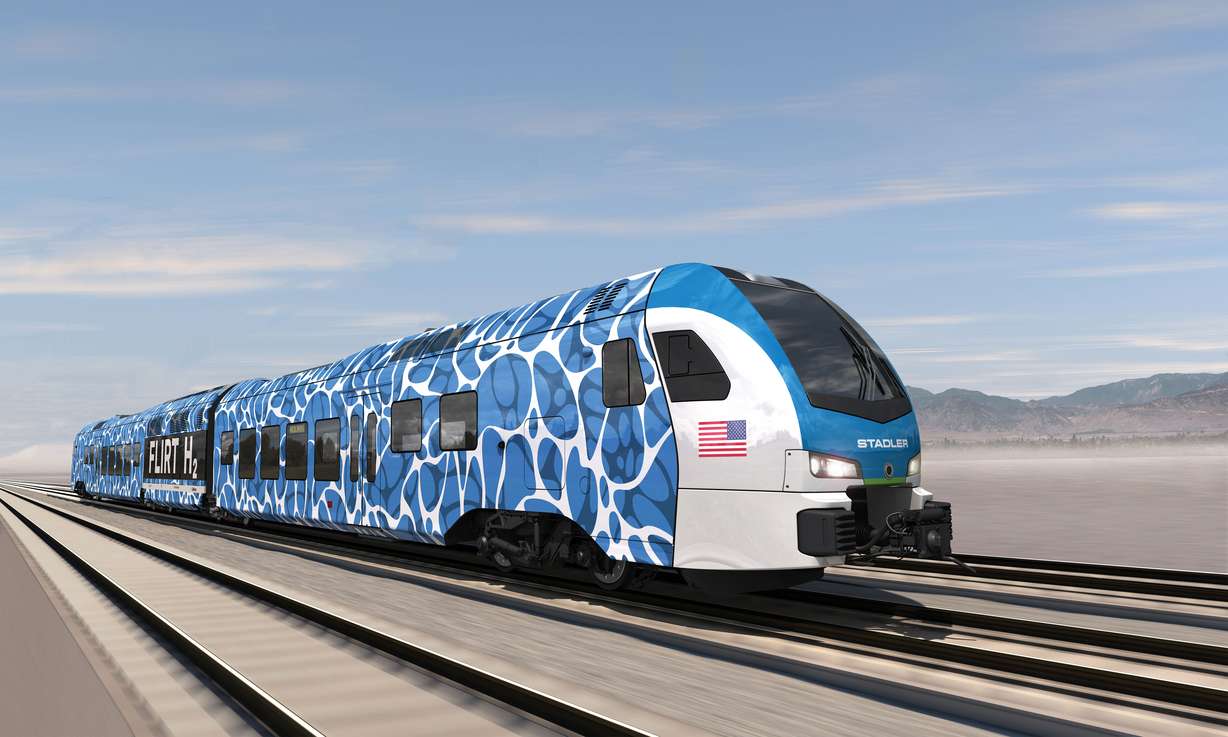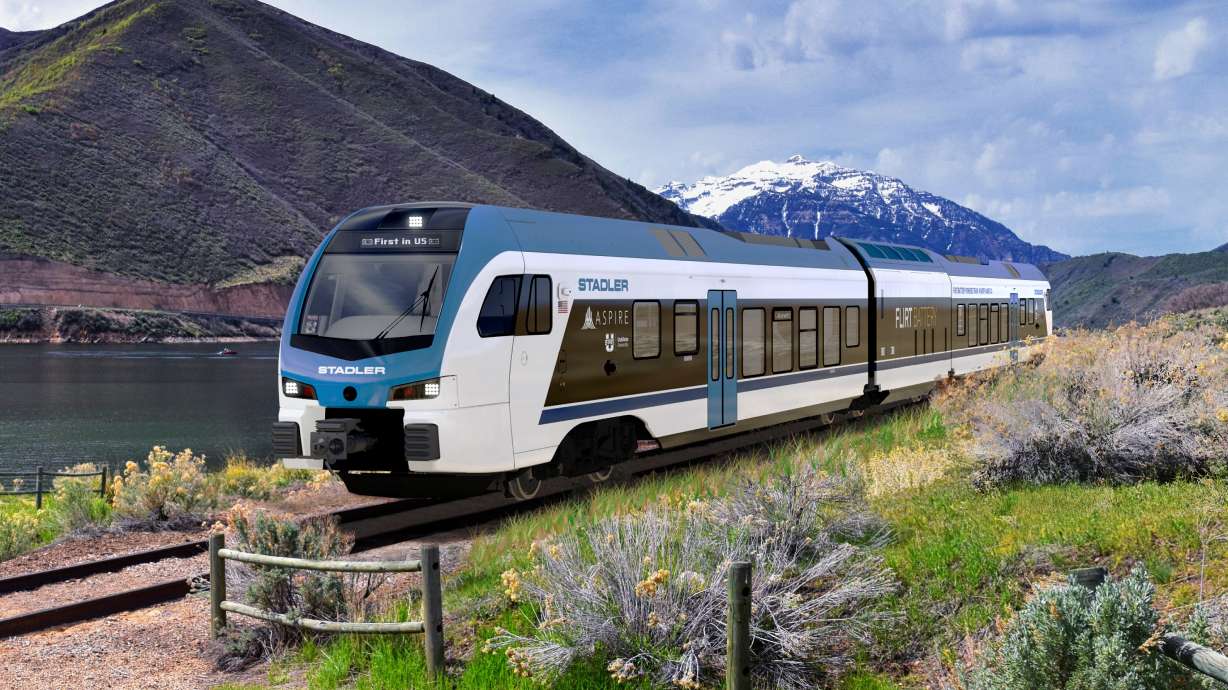Estimated read time: 4-5 minutes
This archived news story is available only for your personal, non-commercial use. Information in the story may be outdated or superseded by additional information. Reading or replaying the story in its archived form does not constitute a republication of the story.
With concerns about air quality, increased gas prices and growing traffic, the world needs alternative transport modes. The desire to responsibly use the earth's natural resources, show respect for the environment and deliberately grow cities adds to the challenge to develop viable options.
As the technology for alternative means of operation become more commonplace, passenger rail is an ideal mode of transport for residents of many mid-size and larger U.S. cities, including Salt Lake City.
Hydrogen-powered trains built in Utah
U.S. rail networks rely on diesel engines. Unlike Asian and European countries, most rail networks here are not equipped with overhead electrical lines. For many cities and transit agencies, the money needed to build an electrified rail infrastructure is simply not available.
Even areas with existing electrical infrastructure face similar challenges. Retrofitting overhead contact lines and substations requires massive budgets and a lot of time.
Fortunately, zero-emission trains were developed as an alternative to these costly proposals. One example is the FLIRT H₂ passenger train from Stadler, with its North American Headquarters in Salt Lake City.
Instead of black plumes of smoke, the FLIRT H₂ emits only water vapor because it runs on an electric drive with hydrogen fuel cells as the energy source. This enables the FLIRT H₂ model to replace diesel trains on non-electrified or partially electrified lines for emission-free passenger transport.

The electricity generated by the hydrogen fuel cells serves several functions including powering the train, its HVAC system and charging the onboard lithium-ion traction batteries. The train accelerates and brakes using electric energy alone and kinetic energy is stored in the batteries during braking, which helps increase the train's efficiency. Under ideal conditions, the train can travel 286 miles at a top speed of 79 mph without refueling.
The technology is already getting attention as transit authorities consider the future of passenger train travel. Stadler sold its first FLIRT H₂ vehicle in the US in 2019. This first vehicle is being built for California customer San Bernardino County Transit Authority (SBCTA) and is expected to start passenger service between San Bernardino and Redlands in 2024.
Batteries to replace diesel engines
Another alternative solution to diesel are battery-powered rail vehicles.
Utah State University and the ASPIRE Engineering Research Center announced in February that they will partner with Stadler to develop and test a battery-powered passenger train in Utah. Indicative of Stadler's commitment to innovation, this train will be the first of its kind in North America.
The goal of the project is to develop and build a battery-powered two-car-train set. The battery-powered FLIRT, a single-decker, lightweight train, is another solution for routes without end-to-end electrification.
The collaboration between ASPIRE and Stadler will provide a model to demonstrate Stadler's real-life zero-emission capabilities for U.S. transit authorities. Stadler's focus will be the design and build of the trainset, and ASPIRE is developing charging infrastructure for the vehicle. Tests are planned to take place at Stadler's facility in Salt Lake City.
ASPIRE was awarded legislative funding to help achieve three goals with this technology: workforce development, economic impact and improving air quality.
"With little to no electrified routes in the North American public rail transit system, a battery train is a great zero-emission alternative to diesel-powered vehicles. After the contract for a hydrogen-powered FLIRT for California, we are now excited to bring our battery solution to the United States," said Martin Ritter, president and CEO of Stadler US, Inc. "In ASPIRE we have found an excellent partner to develop the most efficient and fully integrated system for environmentally friendly mobility. We are proud to be able to work with local talent to design and build this technology here in Utah."

A positive impact on people and the environment
As the country combats the effects of climate change, alternative modes of transit are in higher demand than ever. With this, the U.S. government has dedicated significant funding to improve rail infrastructure including the modernization of passenger rail vehicles. This now enables transit authorities nationwide to plan for clean, sustainable alternatives and makes possible the purchase of such options.
The impact of the investment in new technologies is apparent in several facets of the national and local economy.
Stadler is going to be hiring skilled systems engineers, logistics specialists, buyers, vehicle assemblers and other stable careers that did not previously exist in the Salt Lake Valley. This will be key to setting the company up for success in fulfilling orders for rail vehicles running on green technology.










